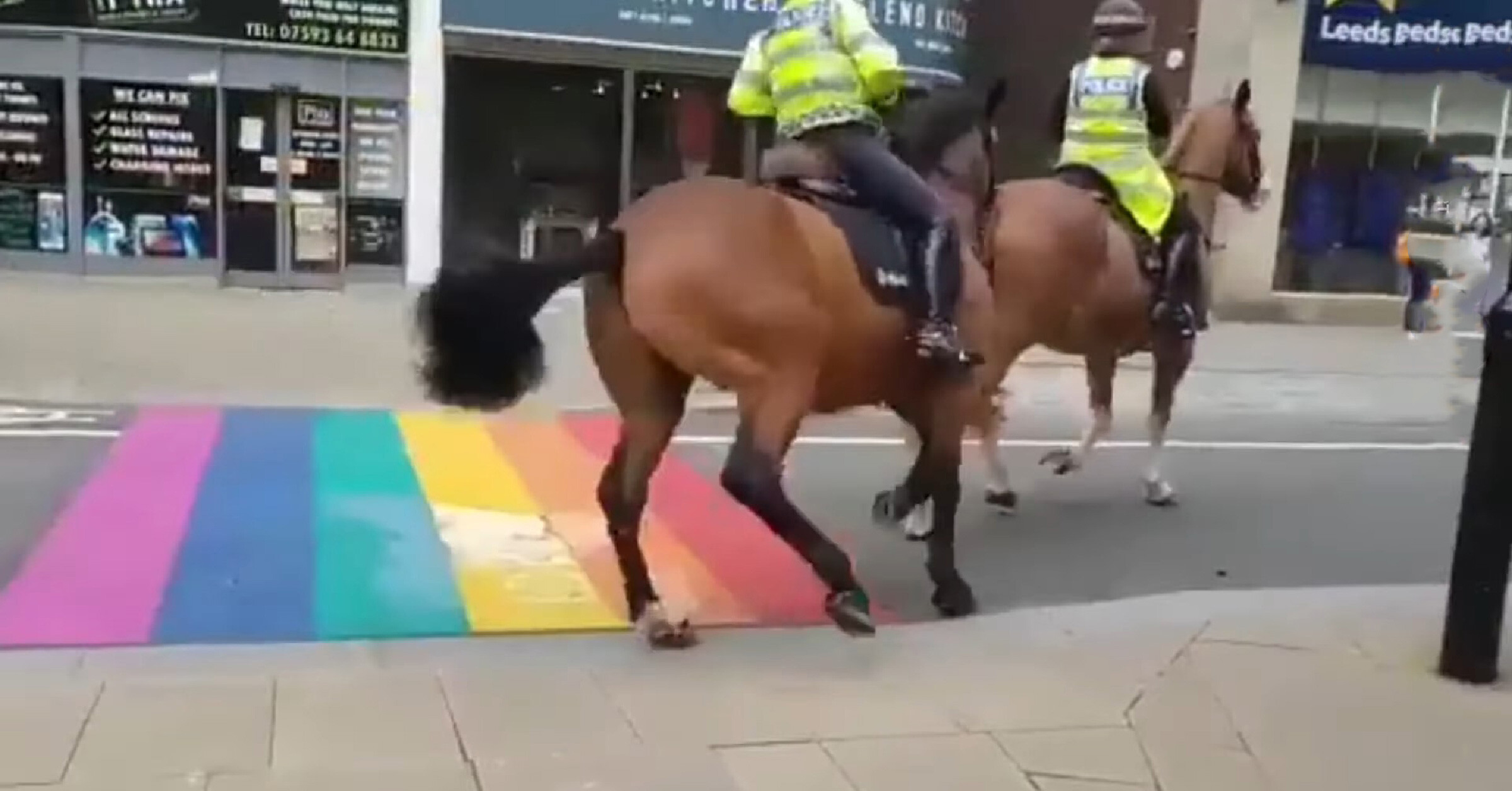Horses can identify some colors; they see yellow and blue the best, but cannot recognize red. One study showed that horses could easily tell blue, yellow, and green from gray, but not red. Horses also have difficulty separating red from green, similar to humans who experience red/green color blindness. Researchers have found that horses react more to yellow, white, black, and blue floors, as compared to floors that are green, red, brown, or gray.

In this video, the horses spooked so easily when they saw the LGBT crossing. Often a horse’s natural reaction to something that it doesn’t understand is to spook or shy. The horse may or may not want to keep its eyes on the object that frightens them. In the wild, this quick reaction is a response that would allow a horse to flee a predator very quickly.

Adverse reactions of the domestic horse to environmental stimuli can be problematic in training and management. Hesitation and alarm reactions to visual features of the ground can occur in both ridden work and when handling horses.

Horses distinguish colors in two wavelength regions of visible light, compared to the three-color (trichromic vision) of most humans. In other words, horses naturally see the blue and green colors of the spectrum and the color variations based upon them, but cannot distinguish red. A horse’s vision is similar to a person who is red-green color blind. Horses can only see blues and yellows. However, unlike a human, a horse can probably not see any intermediate hues.

Many people think that animals, including horses, are colorblind and only see in shades of gray. Horses do see color, but they may not see it as vividly as we do. This is because they can only see two of the three visible wavelengths in the light spectrum, which is somewhat similar to the way colorblind humans see.
